Opinion & Analysis
The 23 players who can win the Masters
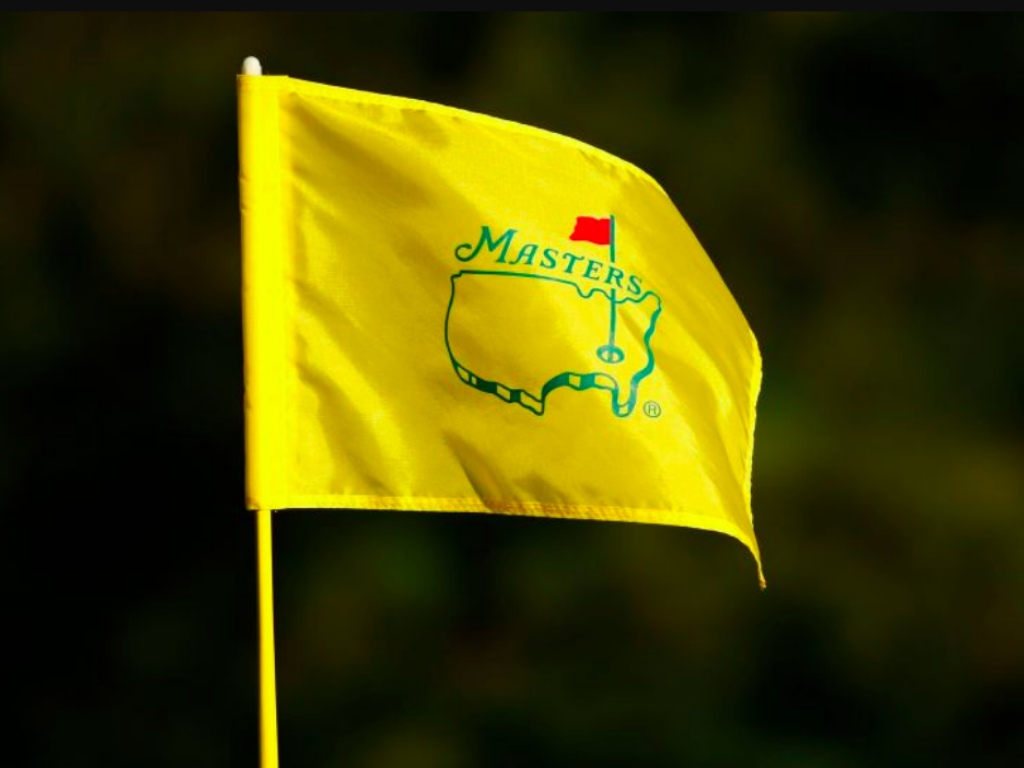
Over the past 10 Masters, I have created a filtering process to help determine the players who are most likely to win the green jacket based on criteria that have strongly predictive outcomes at Augusta. I usually get the list down to roughly 20-24 players.
In that time I have correctly shortlisted every champion. In last year’s Masters, right of the 11 players that finished in the top-10 were shortlisted. The closest a non-shortlisted player came to winning was Corey Conners’ T6 finish; seven strokes from the winner Scottie Scheffler.
If you’re watching at home, the “critical holes” that will likely determine the top finishers will be holes No. 8, 11, 13, and 15. With the 13th hole being lengthened this year I do not expect the hole to lose any mathematical importance for the top finishers.
Moving on to the tournament, I will address the elephant in the room with the LIV Tour players. The LIV Tour does not have ShotLink data, so many of the measures we can use to filter out players do not apply. Therefore I have to perform guesswork based on their most recent performances on the PGA Tour as well as how well the player has played on the LIV Tour. I won’t go over each player, but here are the LIV Tour players I have filtered out.
- Abraham Ancer
- Bryson DeChambeau
- Sergio Garcia
- Talor Gooch
- Jason Kokrak
- Phil Mickelson
- Kevin Na
- Joaquin Niemann
- Louis Oosthuizen
- Thomas Pieters
- Patrick Reed
- Charl Schwartzel
- Harold Varner III
- Bubba Watson
Next, I filtered out the amateurs and all first-time professional attendees. The Masters has only been won three times by a first-time attendee: Fuzzy Zoeller was the last to win in 1979. Prior to Zoeller though, it was Horton Smith in the inaugural event in 1934 followed by Gene Sarazen in 1935.
- Sam Bennett (a)
- Ben Carr (a)
- Harrison Crowe (a)
- Mateo Fernandez de Oliveria (a)
- Ryan Fox
- Kazuki Higa (a)
- Tom Kim
- Kurt Kitayama
- Matthew McClean (a)
- Adrian Meronk
- Taylor Moore
- Mito Pereira
- Aldrich Potgieter (a)
- Gordon Sargent (a)
- Adam Svensson
- Sahith Theegala
Out of the first time invitees the data projects Kurt Kitayama as the favorite to finish best.
I also filter out old Masters champions that I do not believe can get into contention anymore.
- Fred Couples
- Bernhard Langer
- Sandy Lyle
- Larry Mize
- Jose Maria Olazabal
- Vijay Singh
- Mike Weir
Recency has a strong predictive value for player performance and missing the cut in the event in the prior week greatly reduces the likelihood of winning the following week compared to players that miss the cut, take a week off, and then play the following week. Therefore I filter out any player(s) that missed the cut at the Valero Texas Open last week.
- Tyrrell Hatton
And let’s filter out those players that have never made the cut at the Masters as outside of Zoeller, Horton Smith and Sarazen mentioned previously.
- Sam Burns
- K.H. Lee
- J.T. Poston
- Cameron Young
A Tradition Unlike Any Other…
Every year I do my Masters picks, it’s always pointed out that I do not pick former Masters Champion Zach Johnson due to his lack of length off the tee. Augusta National greatly favors long-ball hitters. They can play the par 5s more like par 4s, and typically the longer hitters can also hit the ball higher so they can get their long approach shots to hold the green more easily.
When Johnson won the Masters in 2007, the event featured record-low temperatures in the mid-40s and wind gusts of 33 mph. This made it very hard for any player to reach the par 5s in two shots and allowed Johnson to get into a wedge contest on the par 5s, his strength.
The weather report this week is calling for rain on Friday with rain and cooler temperatures on the weekend. While it depends on the course, typically softer conditions favor longer hitters. However, that’s on your standard golf courses with rough and fairways roughly 30 yards wide. On those courses the longer hitters start to hit more fairways and that reduces the standard deviation of hit fairway percentage between the field. Augusta National has very little rough. That means the standard deviation of hit fairway percentage is already low and it still favors the longer hitter because they are leaving themselves with shorter approach shots from the same type of lie.
The key hole will likely be the par-5 13th. It was has been a critical hole on the course every year that I have posted this column. Now it has lengthened by 37 yards. If the weather conditions prevent the hole from being reachable in two shots, that will favor the shorter and more accurate ballstrikers that are adept from 75-125 yard like Zach Johnson back in 2007.
Having said all of that, I will stick with the filters I have used due to the the weather forecast not calling for a lot of wind and at this point it’s impossible to predict how the par-5 13th hole will play.
So I will rule out the golfers that are hitting the ball too short to win.
- Russell Henley
- Tom Hoge
- Billy Horschel
- Zach Johnson
- Chris Kirk
- Kevin Kisner
- Francesco Molinari
- Collin Morikawa
- Sepp Straka
Out of this group, the data likes Tom Hoge the best. He currently ranks 4th in Red Zone (175-225 yards) play and 31st form the Green Zone (75-125 yards) and is one of the best 3-wood performers on Tour. Morikawa isn’t quite as sharp as he has been the in the past as he ranks 43rd from the Red Zone and 88th from Green Zone. But if he regains his old form these weather conditions may play nicely in his favor.
Last year I created a new formula to better determine ball height. As I’ve written in each Masters picks post, low ball hitters tend to not fare well at Augusta. Last year I had nine players filtered out for low trajectory and the best finisher was Corey Conners at T6. Danny Willett also finished T12, but the other seven low ball filtered players didn’t do much.
- Brian Harman
- Max Homa
- Seamus Power
- Alex Noren
- Si Woo Kim
The big shocker is Homa, the fifth ranked player in the world. Typically has has been a high ball hitter, but this season he has dramatically lowered his ball flight. The weather conditions may help particularly if the greens soften and hold better.. Currently he ranks sixth in Red Zone play and first in Green Zone play, so I am not exactly confident in filtering him from winning.
Last season I had 14 players filtered out for poor Red Zone play. 8 of the 14 players either missed the cut or withdrew from the tournament. Rory McIlroy finished 2nd, but needed a final round 64 to do so. Other than that, Charl Schwartzel finished t-10th and the rest either missed the cut or didn’t do much of anything.
So, let’s filter out those players.
- Cameron Champ
- Harris English
- Tommy Fleetwood
- Mackenzie Hughes
- Min-Woo Lee
- Hideki Matsuyama
- Adam Scott
- Jordan Spieth
- Danny Willett
That leaves 23 players that can win the Masters:
- Keegan Bradley (150/1)
- Patrick Cantlay (20/1)
- Corey Conners (40/1)
- Jason Day (25/1)
- Tony Finau (25/1)
- Matthew Fitzpatrick (50/1)
- Viktor Hovland (40/1)
- Sungjae Im (40/1)
- Dustin Johnson (25/1)
- Brooks Koepka (33/1)
- Shane Lowry (66/1)
- Rory McIlroy (7/1)
- Keith Mitchell (125/1)
- Jon Rahm (10/1)
- Justin Rose (66/1)
- Xander Schauffele (25/1)
- Scottie Scheffler (7/1)
- Cameron Smith (25/1)
- Scott Stallings (500/1)
- Justin Thomas (22/1)
- Gary Woodland (250/1)
- Tiger Woods (80/1)
- Will Zalatoris (33/1)
My top-10 picks are as follows:
- Rory McIlroy (7/1)
- Scottie Scheffler (7/1)
- Jon Rahm (10/1)
- Tony Finau (25/1)
- Dustin Johnson (25/1)
- Brooks Koepka (33/1)
- Corey Conners (40/1)
- Shane Lowry (66/1)
- Keith Mitchell (125/1)
- Keegan Bradley (150/1)
- LIKE110
- LEGIT32
- WOW12
- LOL14
- IDHT4
- FLOP9
- OB5
- SHANK29
Opinion & Analysis
The Wedge Guy: What is a “wedge” anyway?
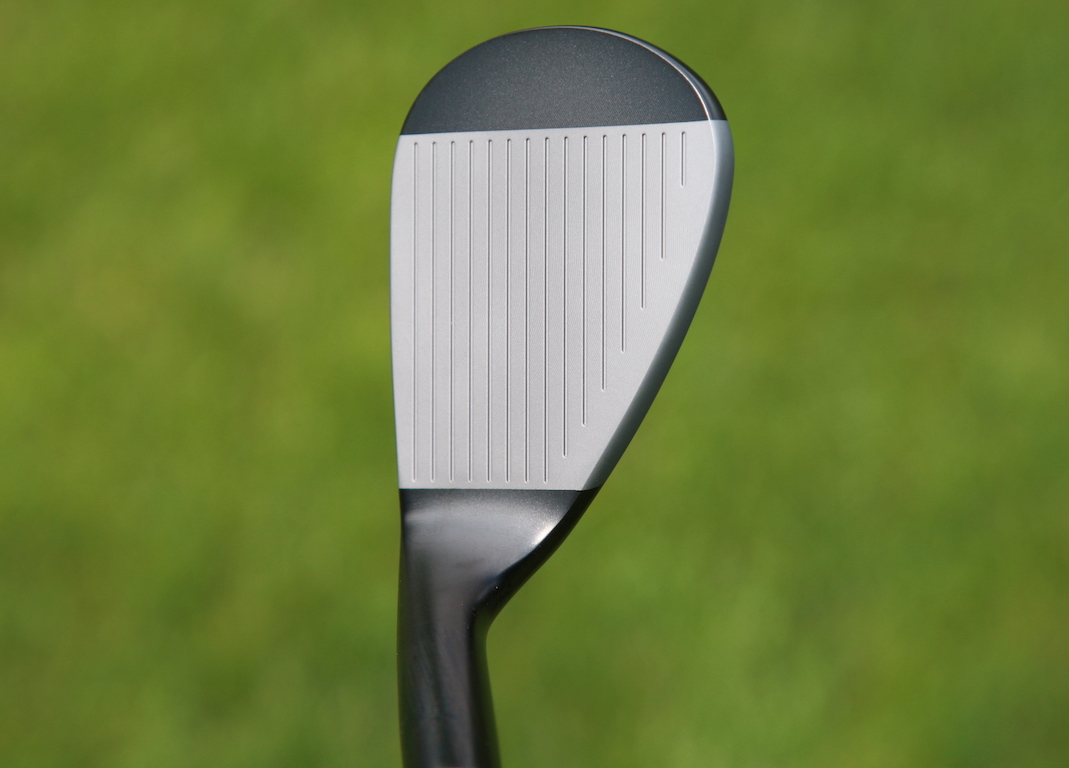
This week’s post is somewhat of a continuation of the recent path we’ve been on, discussing the nuances of those high-loft clubs at the short end of our sets – those specialty clubs we call “wedges.” The real question might be:
“What is a ‘wedge’ anyway?”
Can that name be given to any iron-type club simply based on its loft? And if that’s the defining criteria, where do “wedge” lofts begin? And can clubs of all different design configurations still all be “wedges” just because they fall into that arbitrary range of lofts?
To the first question, my historical research indicates the term “wedge” first came into common use in the 1930s with the invention of the original sand wedge, generally credited to Gene Sarazen. As the legend goes, after flying with Howard Hughes and observing the use of flaps to make the airplane go up or down, he conceived the idea of a downward angle on the sole of a niblick to make it “reject” from the sand. So, after numerous prototypes and testing, the club that came to be known as the “sand wedge” was born.
Those clubs were about 55-56 degrees of loft, and quickly became widely adopted because of this revolutionary performance from bunkers. My guess is the term “wedge” was applied to that club because that’s exactly how you used it – you “wedged” the club between the ball and the turf – loft made the ball go up and the sole made the club “bounce” off the turf.
The professionals of the 1940s and 1950s began to use their sand wedge for more specialty shots around the greens, but most often relied on their highest lofted iron for most routine pitch shots. In sets back then, that club had 50-52 degrees of loft and was often called a “pitching wedge,” but some labeled it simply a “10-iron,” or in Ben Hogan’s case, the Equalizer.
But that club looked like the irons it matched, bearing little resemblance to the specialty “sand wedge” with its big flange and heavy sole, but I really don’t know why it was also called a “wedge.”
As iron lofts began to strengthen in the 1980s, the need for a “gap wedge” came about, as that valuable 50- to 52-degree iron was disappearing. Then at the other end of the set, the “lob wedge” appeared. Both of those clubs bore some resemblance to the sand wedge because they were most often presented as loft extensions in manufacturers’ wedge product lines.
So, now let’s fast-forward to 2023. Most iron sets have a “P-club” of rarely more than 45 degrees, and we’re seeing more and more with as low as 42 degrees of loft. Many of the iron models offer set-matching “wedges” labeled “A”, “G”, “S”, etc. to extend the iron design up into the higher lofts. These all look almost identical to the 6-iron in that set, because this industry is still caught up in the notion of “matched” sets. (But that’s a topic for another day)
In the “wedge” category, product lines can be confusingly broad, with lofts from 46 to 64 degrees and all kinds of specialized sole configurations. So, back to the original question — what is a “wedge?”
Think about it this way.
At the long end of your set, the club with 22 to 24 degrees of loft might be configured as a fairway wood, or a hybrid, or a hollow high-tech “driving iron,” or simply the 4- or 5-iron that matches your irons. Each golfer can determine which configuration serves him or her best at that loft and the distance it produces.
Likewise, the clubs at the higher loft end of your set might look like your 6-iron, or might look like a traditional wedge, or might look like one of the numerous specialty wedges with a wider sole. My “wedge” designs for Edison Golf don’t really look like any of those.
But just like those options you have to build out the long end of your set, each of those various ways to configure a higher-lofted club will produce different results. So, can we really lump all of these high-loft options into a singular category and call all of them “wedges?”
Or is it time to come up with a totally different word to describe those high-loft clubs in our bags that have the assigned task of delivering consistent results at a range of distances as we get closer to the green?
I’m not sure I have the answer, but it should be fun for all of us to stop and ponder the question? Your thoughts, everyone?
- LIKE17
- LEGIT6
- WOW0
- LOL0
- IDHT0
- FLOP0
- OB0
- SHANK4
Opinion & Analysis
The best bets for the 2023 John Deere Classic

Probably not quite the ‘classic’ of its name, but the John Deere provides some recall of the good and bad of golf betting.
Back in 2013, a young Jordan Spieth made his reputation by sinking a 72nd hole bunker shot to put the willies up course specialist and lumpy bet Zach Johnson. As is the way, the Deere Run guru then bogied his final hole, going on to defeat in a three man play-off.
Fast-forward nine years and J.T Poston landed a confident wager in last year’s event, leading all the way to land a comfortable three shot victory. Can’t wait to see which way it goes this time.
Expect birdies galore around the course this week, with very little difficulty in finding fairways.
With most of the field managing to hit the large greens, GIR stats are less worthy than they might otherwise be. Instead, players need to hit it close enough so they make the majority of putts. As with previous winners Bryson DeChambeau and Lucas Glover (to name just two), high-class ball-strikers can give themselves enough chances to land their share of birdies.
Current form looks a must here this week, with cross-over form from Travelers including Spieth, DeChambeau, Daniel Berger and Brian Harman, and Rocket Mortgage champions Cameron Davis and DeChambeau showing up well at this week’s venue, all recording a similar winning score.
When the market opened, I felt Emiliano Grillo would be third or fourth favourite, so finding him at a bigger price than PGA maidens Denny McCarthy, Adam Schenk and new star on the block Ludvig Aberg was a pleasant surprise.
The three names seem to have more improvement in them than the 30-year-old Argentine, but none have the victories, or the course form, to justify being ahead in the market.
McCarthy has lifted his reputation even further with his play-off loss at Muirfield and leading to halfway at River Highlands, but he faded away when under the cosh here last year, allowing the experienced Grillo to be the closest challenger to Poston (alongside Chritiaan Bezhuidenhout), whilst the 23-year-old Aberg may well be the Second Coming but faded away late on at both River Highlands and Detroit, recording large minus figures for his iron play. Sub 25-1? Really.
Schenk makes a lot of sense on recent form, with iron play making up the most of his impressive tee-to-green stats, but at anything over 25/1 in a weak field, the Charles Schwab winner appeals more than anyone.
Grillo ranks 3rd on tour-tips overall ranking for this event, with half-a-dozen instances of top-25 tee-to-green play in his last eight starts. In the same period (since Bay Hill) the Argentine has listed in the top 12 for approach play on five occasions, leading the field at the Arnold Palmer and ranking 12th at Travelers.
The 15th place at River Highlands on his last outing is the best finish there since 2018 (19th) after which Grillo suffered a slump, falling down the world rankings from 47th to 156th during 2020.
2021 saw him come back with a runner-up behind Stewart Cink at Harbour Town, following up a year later when matching his second place here with a silver medal behind a rampant Tony Finau at the 3M.
Grillo was trending in the right direction before his play-off win at Colonial, with form figures of 7/5/23 and an unconcerning missed-cut at the PGA, and the win, from a nervous Schenk, and the world number one Scottie Scheffler, reads very nicely in this field.
Whilst never the greatest putter in the world, that aspect has improved greatly. Now ranking in 6th for putting average off a large number of greens hit, he has positive figures at five of his last seven starts and comes here recalling last season’s +8.5 strokes tee-to-green and +4 strokes for the flat stick.
Doug Ghim is playing nice golf at the moment, several years after being touted as a superstar.
This test suits the short-hitting but accurate player, and with form figures of 33/15/12/19/27, he’s the type to appeal as a solid top-20 bet.
For win purposes though, I’ll revisit a Grillo formline and row in with the man that lost to the selection by just one shot at the Web.com Tour Championship some eight years ago, Chez Reavie.
I put up the 41-year-old a couple of weeks ago at a monster 200/1 to regain his 2019 Travelers crown, and he gave us a thrill until fading away on Sunday, yet still paying out a healthy return for a place.
A 2021 finish of 18th and a previous pair of top-15 finishes led to him going off around 50/1 for this event 12 months ago, and I’m not sure he’s done anything, or faces tough enough opposition, to be 10 points longer.
Previous to his latest win at the Barracuda in July last year, the three-time winner posted 27th at Colonial and 8th at River Highlands. This time, he comes here after being 12thg at the halfway stage of the Charles Schwab and in second place after three rounds in Connecticut.
Now, with six consecutive cuts made and four of his last eight rounds in the low-to-mid-60s, he arrives after recording an average of between 5.5 and 6.0 strokes for approaches and tee-to-green, a repeat of which will see him bang there come Sunday evening.
With River Highlands and Deere Run form in abundance, he’s yet another old campaigner I feel will prove too much for the young guns.
Finally, we’ll go with a pair of three-figure pokes, firstly in the way of David Lipsky, a player with two wins on the European Tour at tracks that require a touch of guile over strength.
It may be five years since the 34-year-old worked his way around Leopard Creek to back up his Crans victory, but his career has not been devoid of highlights, including a four shot victory over Taylor Pendrith at the short San Antonio course in Texas.
2021 saw him record six top-10 finishes, including at Abu Dhabi and Valderrama, whilst a year later he finished top-10 at the Corales and better-class Mexico Open behine Jon Rahm and Tony Finau.
A season-opening top-five at the Sony promised much and, whilst it hasn’t gone that well, Lipsky can still boast top-20 finishes at the Charles Schwab and Memorial, where at halfway he was first and sixth respectively.
Always around 24th place last season, Lipsky has shown he can raise his game at a lower level, whilst two of his three victories have come in 25-under and 18-under. He can do a job when conditions suit, and at 125/1, he’ll do as a chance to gain some decent each-way money.
Next to him at 125s is 26-year-old rookie Carl Yuan, now finding his feet at this level yet massive amounts of points bigger than some of his more sexy rivals.
A winner on his home tour, he had a remarkable 2022, winning in Louisiana, and racking up a further four top-five and four top-10 finishes and getting himself in at the highest level a year after he was due.
Explaining why he missed promotion 12 months earlier, Yuan said it was every player’s dream to represent their country, so popped off to The Olympics rather than guarantee his PGA card through the final six events of 2021.
Still, he’s here now and, after a slow start, made three consecutive cuts – Houston, RSM and Sony – before another lull from mid-January.
Shaking that off, he bounced back to form with the halfway lead at the better-class Canadian Open, stating, “That’s my goal [retaining his card] coming into the week. That’s my No. 1 goal. Not a result goal, just like being in the present, hitting shot by shot and, yeah, being out here trying to have the most fun. All of it.”
It seems to be working as he finished a highly respectable 18th before landing another top-20 at Detroit last week after a third-round 64 had gotten him inside the top-10 going into payday.
This massive hitter will be able to club down for most of this week’s test, ensuring he builds on some steady seasonal figures for tee-to-green and with untold improvement to come.
There is a chance he needs a much bigger environment to thrive, but as an unexposed, potentially high-class improving recruit, he needs taking a chance with.
Recommended Bets:
- Emiliano Grillo
- Chez Reavie
- David Lipsky
- Carl Yuan
- LIKE1
- LEGIT0
- WOW1
- LOL0
- IDHT0
- FLOP0
- OB0
- SHANK0
Opinion & Analysis
The Wedge Guy: The case against set-match wedges
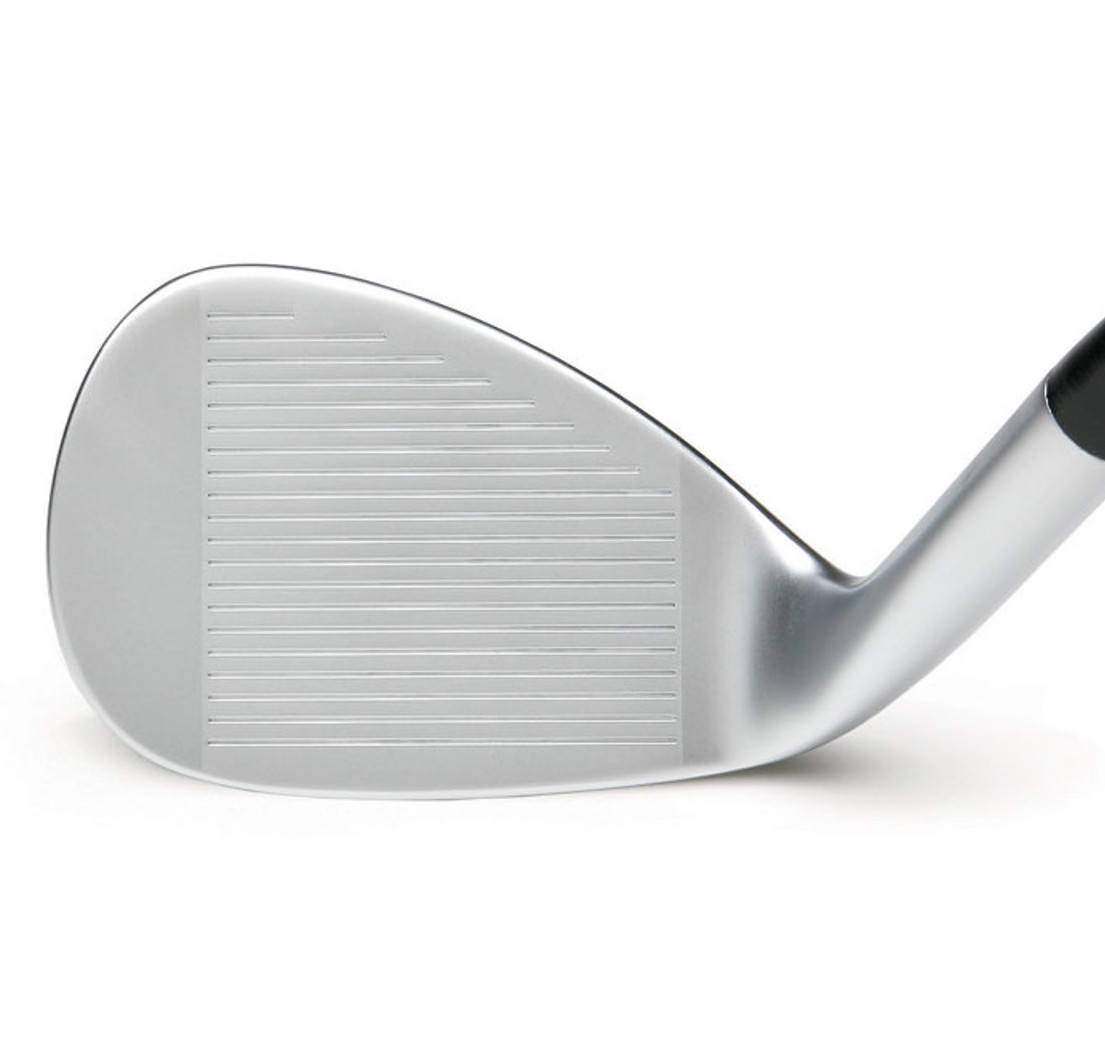
One side-effect of the relentless effort by major iron makers to win the “launch monitor wars” that pit one 6- or 7-iron against another is that the lofts throughout sets of irons have been continually strengthened to a point of what I consider ridiculousness. There are two major problems with this trend in specifications for sets of irons. The first is that to try to win the “launch monitor wars,” iron makers have to try to make their 6- and 7-irons go farther than the other guys’. That means making those mid-irons stronger in loft and using a bit of “trickery” by increasing the loft gapping between your higher-loft scoring clubs so that your “P-club” doesn’t get too strong, too (though modern “P-clubs” of 43-45 degrees of loft are really not “pitching wedges” at all).
Historically, iron lofts progressed through the set at four-degree loft intervals, and .5-inch length differentials. This wasn’t happenstance at all, it was the result of rigorous testing by professionals and average golfers. Those technical differences typically delivered consistent distance gapping from the pitching wedge down through the set.
A review of the specifications of almost every set of irons on the market today, however, will reveal that loft differentials are now five degrees between the short irons and as little as two degrees at the long end of the set. This is totally counter-intuitive to how you can improve your short iron and wedge precision. Why in the world would you want to increase the distance differences between your shorter irons, which is where you most need distance control precision? After all, a 6-iron shot that is 25 to 30 feet long or short is pretty darn good, but it sucks if you have a 9-iron or wedge in your hands.
Understand that the “holy grail” of distance in golf club design is the combination of high launch and low spin. Achieving this is relatively simple – put as much mass in the bottom of the golf clubhead as possible.
So, the second major problem caused by the “launch monitor wars” is how modern irons are designed. The early “solution” to longer-hitting mid-irons was extreme sole-weighting with thinner faces. The newer technologies we’re seeing in irons combine even faster faces with heavy tungsten inserts in the sole of the club.
But the problem with almost all irons on the market – especially in the “game improvement” category – is that this same design and technologies are applied throughout the “matched” set of irons and even into “wedges” that display that same design concept. And that’s where your prime scoring clubs are being compromised.
High launch and low spin are great in a driver or fairway wood, and maybe even desirable in your middle irons — but that is the exact opposite of what you need to achieve consistent distance precision in prime scoring range when you have a short iron or wedge in your hands.
Almost all accomplished players have learned to hit their short irons and wedges with a penetrating ball flight and lots of spin to stop the ball in its tracks once it hits the green. So why would you ever want to play short irons and wedges that have all their mass at the bottom, which is designed to deliver the exact opposite of what you should be seeking?
Now, let’s go back to the title of today’s post.
Either your 6- or 7-iron is 28 to 30 degrees of loft – but have you ever stopped to think that this loft is closer to that of your driver than to where your “wedge” lofts begin (around 45 degrees)? I feel certain that no golfer in the history of the world has ever proclaimed
“I really like my 7-iron. Can you make me a driver that looks just like it?”
In fact, from your 7-iron down to your driver, you likely have at least four, if not five, completely different clubhead designs in order to optimize performance at a given range of lofts. That iron design might evolve to a driving iron design a few degrees lower, then most likely to a hybrid design a few degrees lower than that, then to a fairway wood as lofts get below twenty degrees, and finally to a driver at 9 to 12 degrees.
So, if it takes four to five completely different clubhead designs to optimize performance at the long end of the set, how realistic is it that only one design throughout your set of irons can deliver the performance and precision you need at the short end?
I’ve always believed that every club in your bag has a specific purpose and expectation. Fairway woods, hybrids, and long irons are to get you close to or maybe even on the green from a long-distance approach. With middle irons (5 through 7 or 8), your goal is to get on the green within a reasonable distance, or certainly not to leave yourself a tough greenside save.
Your “money clubs” are those with lofts above 37 to 40 degrees, as this is where you have a chance to get close enough for the occasional one-putt, whether that is for a birdie, par, or bogey. And this is the end of your set where you likely have not spent the time to make sure it’s just right.
To accent just how important this part of your set really is, did you know (if you discount the fact that almost all so-called par-5 holes on the tour are really just long par 4s for those guys) the entire PGA Tour is over par outside 9-iron range?
Something to think about, for sure.
- LIKE59
- LEGIT18
- WOW4
- LOL2
- IDHT0
- FLOP4
- OB0
- SHANK3
-

 19th Hole2 weeks ago
19th Hole2 weeks agoTiger Woods delivered stinging message to major winner after denying him lift on private jet
-
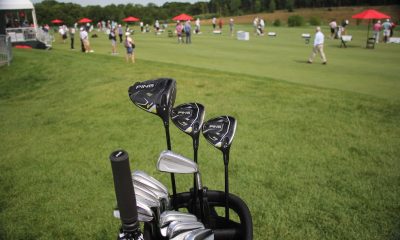
 Whats in the Bag2 weeks ago
Whats in the Bag2 weeks agoSeamus Power WITB 2023 (June)
-

 Whats in the Bag3 weeks ago
Whats in the Bag3 weeks agoOmar Morales WITB 2023 (June)
-

 Whats in the Bag3 weeks ago
Whats in the Bag3 weeks agoBlayne Barber WITB 2023 (June)
-

 Whats in the Bag3 weeks ago
Whats in the Bag3 weeks agoBen Carr WITB 2023 (June)
-
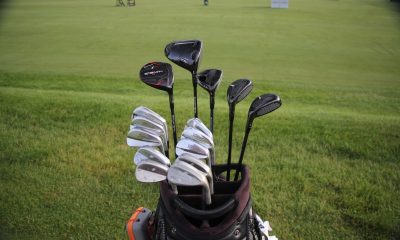
 Whats in the Bag2 weeks ago
Whats in the Bag2 weeks agoTom Hoge WITB 2023 (June)
-
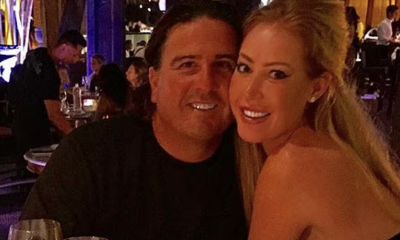
 19th Hole3 weeks ago
19th Hole3 weeks agoJournalist alleges this is the ‘unforgivable’ act Phil Mickelson committed against Pat Perez and his wife
-
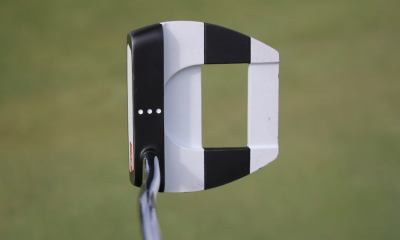
 News2 weeks ago
News2 weeks agoKeegan Bradley’s winning WITB: 2023 Travelers Championship







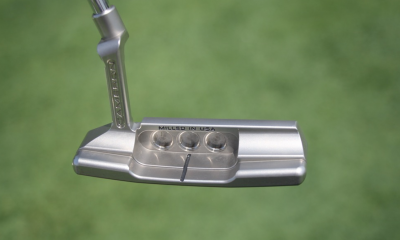

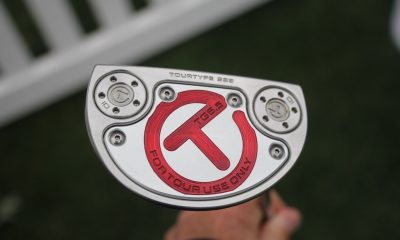

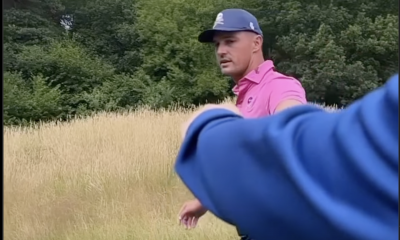

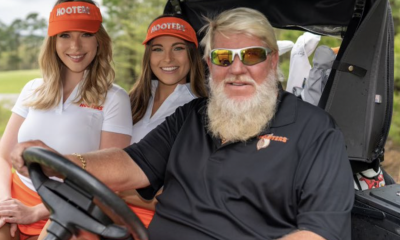











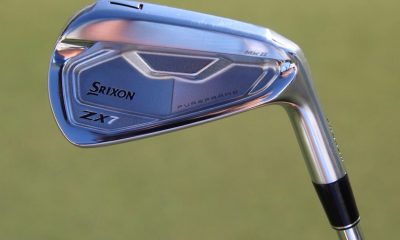

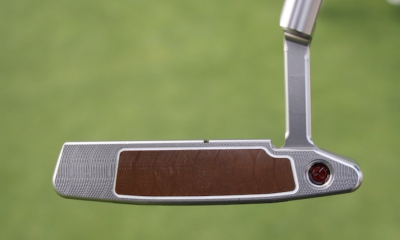

Pingback: Is this the real reason behind Bryson DeChambeau’s total loss of form? – GolfWRX
jamho3
Apr 7, 2023 at 9:54 pm
@Rich I may not LOVE your cowboys, but this and your rule of 12 vid are spectacular. #respect
NMBob
Apr 5, 2023 at 10:44 am
Would not have just dropped Livs Reed, a green jacket holder, or Kokrak who finished T14 last year.
Rich Hunt
Apr 5, 2023 at 11:32 am
Unfortunately without any data it’s a guessing game. However, Reed has lost a ton of distance since his win and has been hitting the ball considerably lower. Kokrak hasn’t been playing well. That could be due to something like putting which isn’t as important at Augusta as people think as many past Masters champions were putting poorly the year they won.
Boaty McBoatface
Apr 5, 2023 at 10:34 am
PReed has been consistently playing solid all year, without fail. He just keeps making boatloads of birdies, so you’re wrong to leave him out. And he’s a past champion, and he plays mostly a draw, and he can control his ball flight really well, which is what you need at Augusta.
JJM1112
Apr 5, 2023 at 10:31 am
I look forward to this article each year, love the rationale. Curious where the green zone/red zone data is from. Looking at PGATour.com, Morikawa is 8th from 175-200 yards and 9th from 200-225. Not sure how that gets him to 43rd in red zone in the article but seems to be better than that to me.
Rich Hunt
Apr 5, 2023 at 11:34 am
1. Red Zone play includes proximity to the cup.
2. It also includes shots from the rough
3. It’s also adjusted for schedule
Masters ?
Apr 5, 2023 at 9:45 am
How do you not have Xander filtered out for hitting it too low? Look at his “tournament only” performance for apex height. He’s significantly low ball flight lower than the rest of the field. Not a single one of the designated events was he anything less than in the red and lower.
Rich Hunt
Apr 5, 2023 at 11:40 am
His Max Height with the driver is adjusted for schedule (players hit it higher or lower on average depending on the course) is at 119th, just high enough. While Tour pros tend to hit all of their clubs the same height, I also went on Tracker2 and looked at Trackman data for Max Height on par-3’s and Xander ranks 100th out of 208 golfers. The other metrics like launch and hang time were enough to have Xander pass thru the filter by a narrow margin.
Masters ?
Apr 6, 2023 at 11:55 am
Where do you get Tracker2 and Trackman data from? Is there a link to where you view each player?
Masters ?
Apr 5, 2023 at 9:43 am
How do you not have Xander filtered out for hitting it too low? Look at his “tournament only” performance for apex height. He’s significantly low ball flight lower than the rest of the field. Not a single one of the designated events was he anything less than in the red and lower.